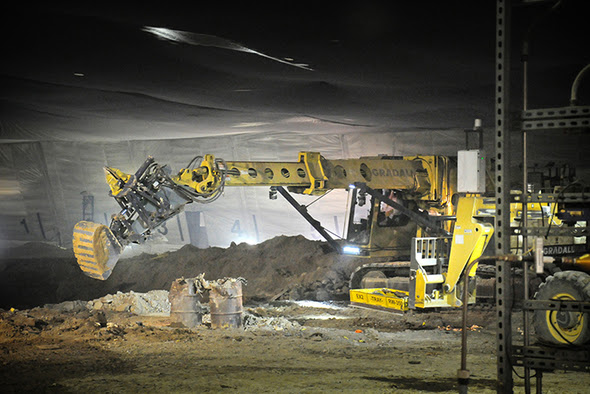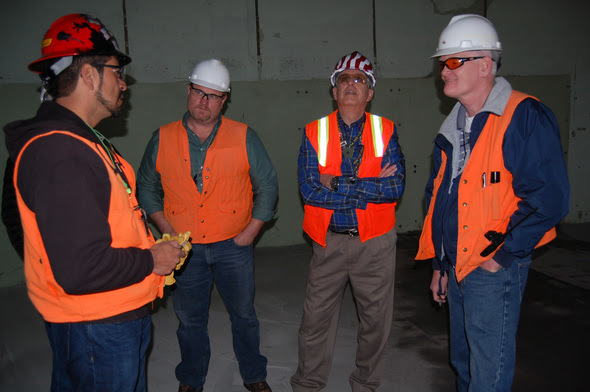EM’s Idaho Site Marks 25 Years of Cleanup Success

Using
an onsite lined landfill to dispose of cleanup debris at the Idaho Site
has saved taxpayers hundreds of millions of dollars over the cost of
shipping the material offsite for disposal.
IDAHO FALLS, Idaho – DOE has successfully cleaned up the Idaho Site’s
legacy waste for the last 25 years, protecting the primary drinking and
irrigation water source for more than 300,000 Idahoans in compliance
with an agreement with the state.
DOE, Idaho and the state’s Environmental Protection Agency (EPA)
signed the Federal Facility Agreement and Consent Order in 1991. It
outlines a plan to investigate and clean up to 500 waste areas within
the 890-square-mile site, most of which is complete. The waste came from
nuclear reactor research and decades-old waste disposal and defense
missions. The sites consist of unlined wastewater disposal ponds; debris
piles; radioactive groundwater plumes; buried barrels and boxes of
radioactive waste; and unexploded ordnance.
DOE’s Idaho Site cleanup contractors have met 981 milestones in the
agreement on or ahead of schedule. Crews are two years ahead of schedule
in a project that has removed more than 7,700 cubic meters (or nearly
37,000 drums) of waste from an unlined Cold War landfill. High-pressure
pumps are removing solvent vapors beneath it. Workers removed and
destroyed nearly 246,000 pounds (equivalent to 336 55-gallon drums) of
solvent vapors through catalytic oxidation units.

Workers exhume buried transuranic waste from Pit 9.
Fifteen of the milestones have proven more challenging than the
others, resulting in delays. EM completed, renegotiated or rescheduled
14 of those. The remaining outstanding milestone deals with treating
900,000 gallons of radioactive liquid waste in three underground storage
tanks. The site’s current cleanup contractor, Fluor Idaho, LLC, has a
four-phase approach to safely and efficiently start up the Integrated
Waste Treatment Unit, a facility to treat the waste. The contractor is
redesigning equipment and resolving a chemistry challenge in the
facility’s primary reaction vessel.

Longtime cleanup employee Kirk Dooley, far right.
Kirk Dooley, a remediation manager and engineer, has seen significant
progress in his 26 years working with the cleanup program.
“The biggest change that I have seen over the years is the cultural
change,” he said. “It’s no longer just a job but employees take pride in
doing their job well and doing it safe.”
Dooley said many innovations have made the cleanup safer and more efficient.
“Several patents were awarded for treating and monitoring
contaminants, and treating sodium and groundwater,” he said. “We’ve also
developed better methods for retrieving buried contaminated waste,
treating the material, and then repackaging it. All of these things have
contributed greatly to the successful cleanup of the site.”
EM
is treating an aquifer at the site’s north end. Workers have treated
more than 600 million gallons of water there. They’ve used a
pump-and-treat system and bioremediation, in which a food-grade whey is
injected into the aquifer near a contaminant plume to encourage
microorganisms to feed on waste.
Construction of a 510,000-cubic-foot landfill in the early 2000s
allowed DOE to consolidate waste from many areas of the site into a
single, managed location with impermeable liners, a leachate collection
system and lined disposal ponds. Disposing of the waste onsite saves
hundreds of millions of dollars over the cost of disposing of the
material out of state.

No comments:
Post a Comment